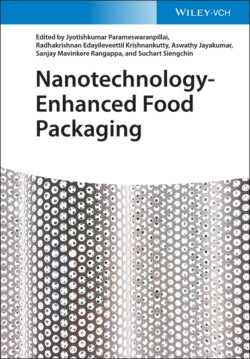Читать книгу Nanotechnology-Enhanced Food Packaging - Группа авторов - Страница 23
1.8 Antimicrobial Films Used in Food Industry
ОглавлениеThere is currently substantial focus given to the use in packaging products of antimicrobial substances (such as silver nanoparticles and silver coatings). Antimicrobial films may help monitor the production and spoilage of pathogenic microorganisms. According to the accepted structural stability and barrier characteristics, the nanomaterials and the antimicrobial characteristics of the antimicrobials impregnated in the image; it is highly beneficial to create an antimicrobial photo. This film allows nanomaterials to add more powerful copies of biological molecules.
A layer-by-layer incorporation of antimicrobial peptides such as nisin may also contribute to the creation of antimicrobial films. Nisin acts as a depolarizing agent in bacterial membranes and creates pores in lipid bilayers. Nanofilm multilayer peptides intercalated different peptides charged at neutral pH, which was much more stable than when peptide film only stabilized electrostatic interactions.
There have also been records of nanoscale chitosan antibacterial action. A potential antimicrobial pathway includes interactions between the positive and the negative chitosan cell membranes, raising the membrane permeability and eventually contributing to the breakdown and leakage of intracellular content. The ineffectiveness of both rough chitosan and engineered nanoparticles at pH levels above 6 is consistent with observation given the lack of protonated amino groups [52].
